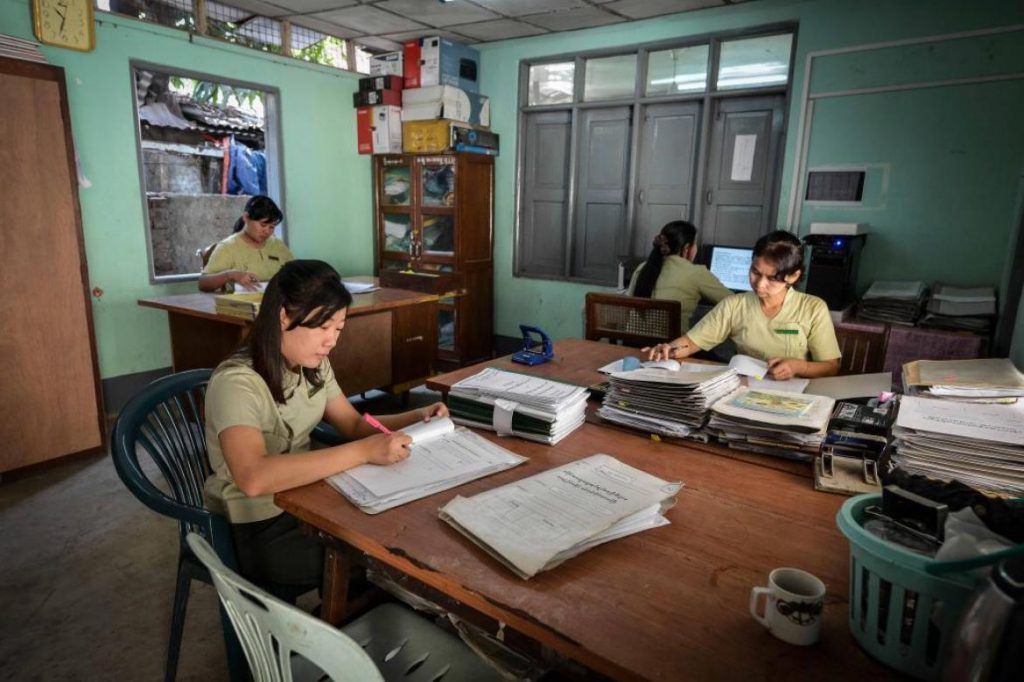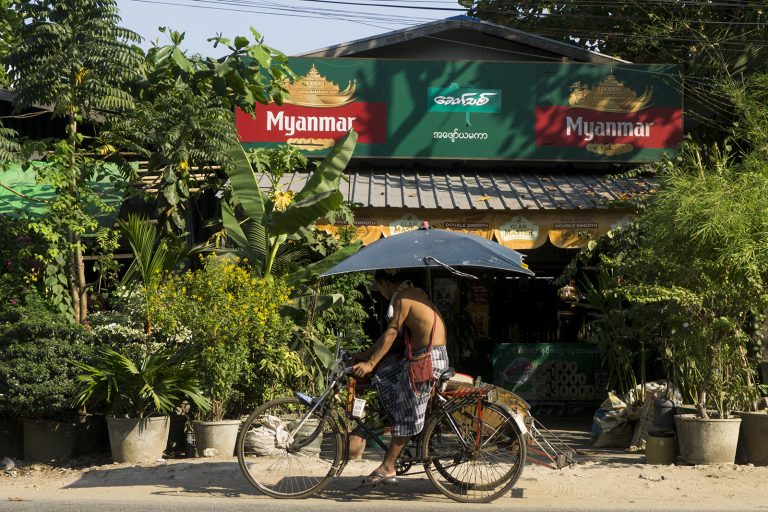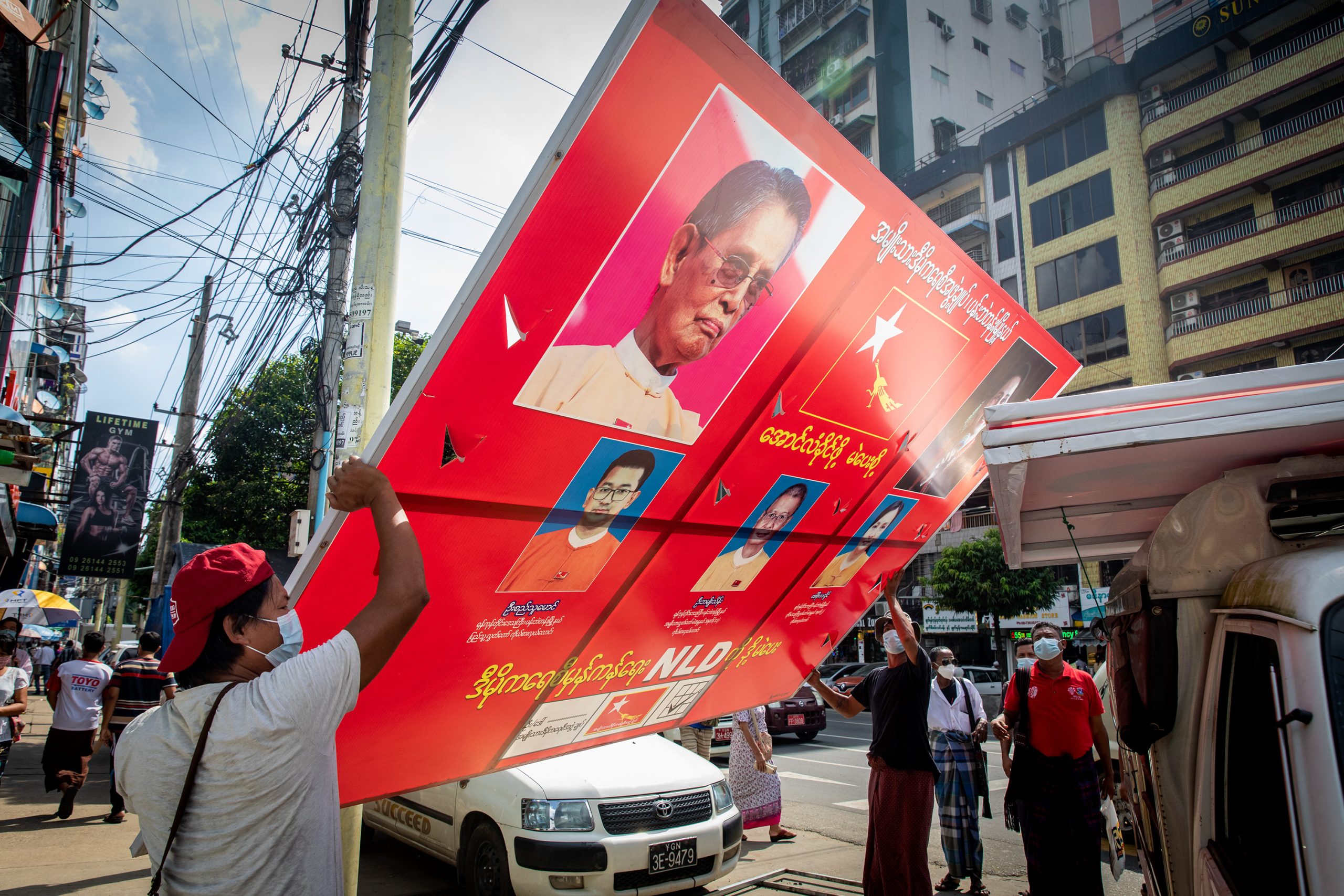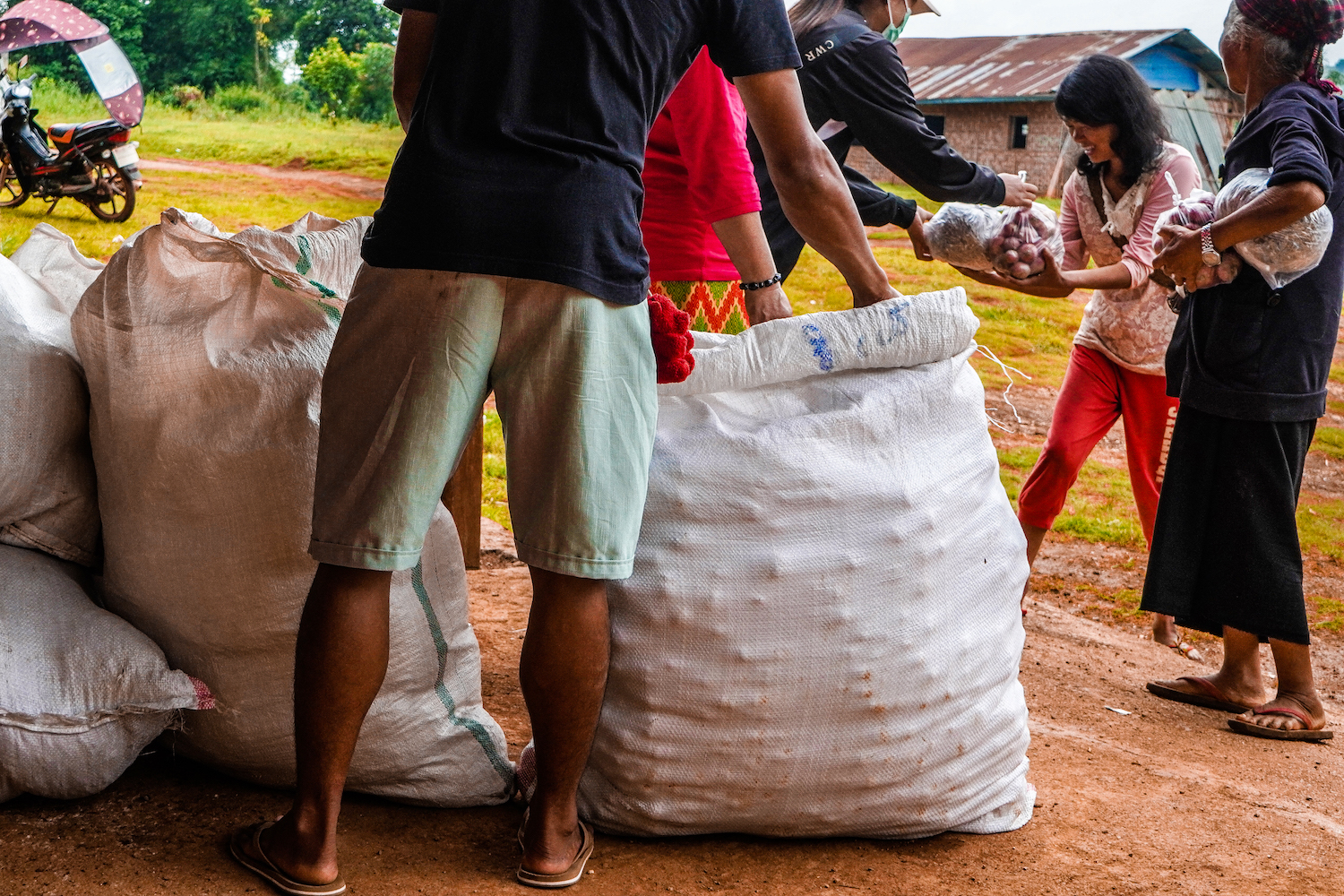By NYAN HLAING LYNN | FRONTIER
NAY PYI TAW — The Union government plans to push ahead with a bill that will reduce the role of the military-controlled General Administration Department in state and regional hluttaws, a senior MP has confirmed.
Pyithu Hluttaw Speaker U Win Myint (NLD, Tarmwe) told Frontier on Wednesday that state and regional governments will be given their own office staff to support legislative work, a role currently performed by GAD employees on secondment.
The plan was confirmed during a two-day meeting of state and regional hluttaw speakers with their Union counterparts in Nay Pyi Taw in the middle of January. The government hopes to implement the plan before the beginning of April.
“At present, [parliamentary administration] is being done by the staff of the General Administration Department,” U Aung Kyaw Khine, speaker of the Ayeyarwady Hluttaw, told Frontier. “Among these staff members, lists are being compiled for who will stay in hluttaw offices and who will go back to their mother department.”
Support more independent journalism like this. Sign up to be a Frontier member.
Under the plan, staff at the parliamentary support offices will be accountable to the Union Parliament instead of the Ministry of Home Affairs, an administrative giant with responsibilities spanning the police, fire services, emergency management and a suite of local government services.
The ministry is one of three operated by the military without the oversight of civilian authorities, along with the Defence and Border Affairs portfolios.
Under Myanmar’s highly centralised 2008 constitution, state and regional governments have limited budgets and a narrow policy remit focused largely on urban development, agriculture and transportation projects.
But U Tin Kyaw Aye, director of the Open Myanmar Research Group, said the Union government’s proposal would nonetheless improve the quality of state and regional parliaments.
“Previously there was no setup dedicated to state and region hluttaws. Now that they have office staff, the supporting work for the legislative process will likely be better,” he said.
Administrative tussles
On several occasions since the 2015 election, which ushered in the National League for Democracy-led government after half a century of military rule, civilian and military authorities have sought to renegotiate the policy areas under their control.
In January 2016, only a week before the new parliament sat in Nay Pyi Taw, outgoing President U Thein Sein made an abortive push to place immigration policy under the Home Affairs Ministry.
Soon after the new government was sworn in last April, the Home Affairs Ministry appointed a number retired military personnel to senior positions of the General Administration Department, a move seen at the time as an attempt to consolidate the military’s power over local government.
Four months later, Home Affairs Minister Lieutenant-General Kyaw Swe issued an order requiring officials in the ministry’s five departments to “serve under the supervision” of state and regional chief ministers.
The directive was later walked back, exempting parts of the Myanmar Police Force and the Bureau of Special Investigations.







